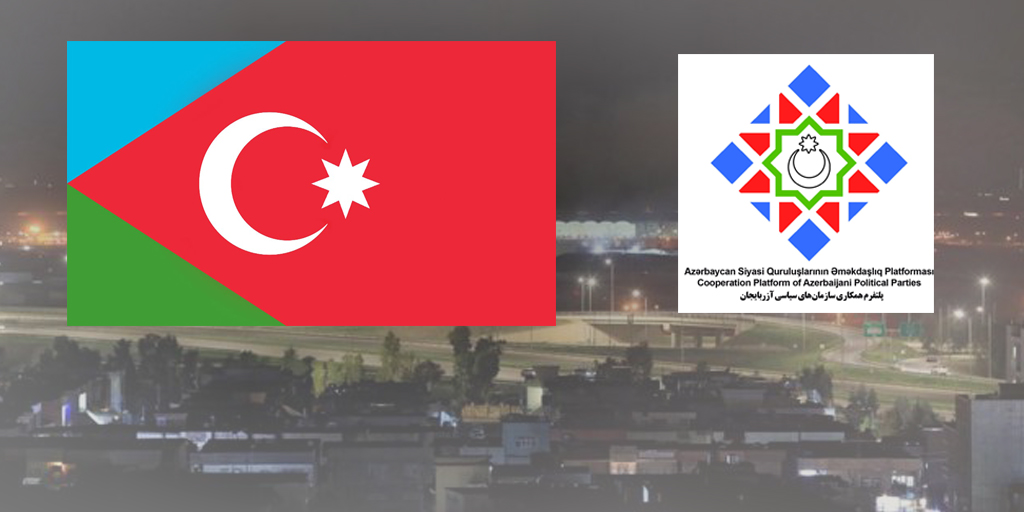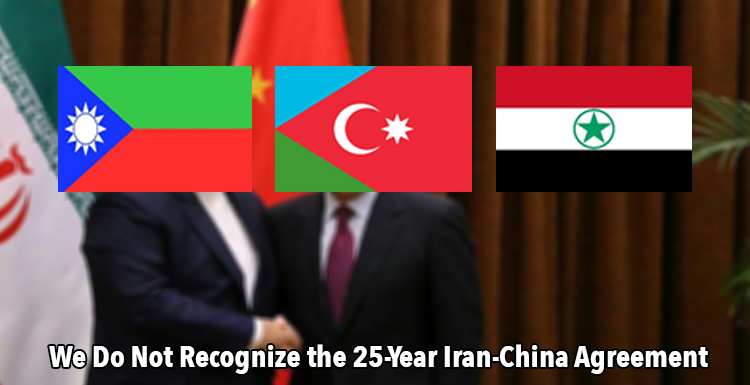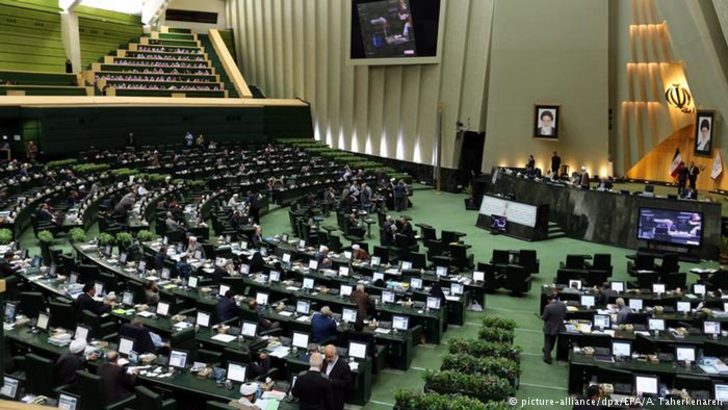The Myth of the Iranian Military Giant

Araz News: Saudi Arabia’s military outspends the Islamic Republic’s 5-to-1; the UAE’s does by 50 percent. And ending the arms embargo after a nuclear deal won’t change that.
you’d be forgiven for thinking that Iran, unshackled from economic sanctions, would have free rein to domineer its vulnerable Persian Gulf Arab neighbors and cause trouble for Israel. As the fearful refrain goes, if an Iran restrained by crippling sanctions has managed to assert its influence over four Arab capitals — those of Iraq, Lebanon, Syria, and Yemen — what will an Iran freed from sanctions and a global arms embargo do? As noted Iran hawk Ray Takeyh recently wrote, “the most important legacy of the prospective agreement [may be that it] enable[d] the Islamic Republic’s imperial surge.” This same line has been pushed so hard that it has become accepted fact in Washington.
The problem is, the line isn’t true. But, nonetheless, it is threatening to upend a lasting nuclear deal with Iran.
As the nuclear talks between Iran and the P5+1 countries head down to the wire in Vienna, the issue has arisen in the question of whether the arms embargo imposed on Iran as part of the U.N. Security Council resolutions would be maintained following a nuclear deal. The United States and its European partners say yes; Russia, China, and Iran say no.
The timing is troubling to say the least. Just as solutions have been found to constrain and roll back elements of Iran’s nuclear program, this issue — one that’s outside the scope of the nuclear talks — is now taking on such exaggerated importance that it threatens to undo the serious progress of the past 18 months. Having performed so well at insulating the nuclear talks from outside complications, U.S. and Iranian negotiators have nearly reached agreement only to come to a standstill over this regional dimension. Of course, no one imagined back in 2010 that a conventional arms embargo — part of what was otherwise a U.N. Security Council resolution focused squarely on Iran’s nuclear-proliferation activities — would rear its ugly head in quite this manner.
The Russian and Iranian position is that the Security Council resolutions rested on the understanding that the arms embargo would be lifted once concerns regarding Iran’s nuclear program were resolved. Provided that a deal is reached on Iran’s nuclear program, Russia and Iran thus argue, the arms embargo loses its legal justification. The current U.S. position, however, may be less interested in maintaining coherence with past policy than it is with ensuring that it mitigates regional allies’ concern as much as possible as part of a nuclear deal with Iran. Understandably, U.S. President Barack Obama’s administration fears that undoing the arms embargo on Iran would be a step too far for some of the United States’ key regional allies, all of which — but particularly Saudi Arabia — threaten to undermine the administration’s case for a nuclear deal should they perceive their interests to dictate in favor of doing so.
The problem is that the exaggerated tales, now running rampant in Washington, of Iranian regional ascendancy in the wake of a nuclear deal don’t jibe with reality.
Far from being a hegemonic power, able to domineer and subdue its regional rivals with impunity, Iran has a regional position that remains untenable, all while its regional rivals procure weapons systems that make themselves increasingly invulnerable.
Indeed, sober assessment shows that — both quantitatively and qualitatively — Iran’s regional rivals are well positioned not just to counter a “rising” Iran but to compete with it as well. Moreover, this has been true for some time. According to an April report from the Center for Strategic and International Studies (CSIS), interrogating the relevant “data make[s] a conclusive case that the Arab Gulf states have … an overwhelming advantage of Iran in both military spending and access to modern arms.”
Quantitatively, Iran’s military expenditures have sunk far below those of its Gulf rivals. In 2014, according to the Stockholm International Peace Research Institute (SIPRI), more than 25 percent of Saudi government spending wasdevoted to beefing up its military assets — expenditures that totaled more than $80 billion. Along with the United Arab Emirates (UAE), which spent nearly $23 billion, the two Gulf Arab countries comprise well over half the $173 billion in military expenditures spent by all Middle Eastern countries that year.
Comparatively, Iran’s military expenditures failed to measure up. During 2014, Iran’s military spending was about $15 billion, which comprised about 9 percent of total military spending in the Middle East. That’s a mere fraction of Saudi military spending and about two-thirds of the UAE’s. The Gulf Cooperation Council states — Bahrain, Kuwait, Oman, Saudi Arabia, and the UAE — outspend Iran on arms by a factor of 13.
This imbalance is also not merely a current phenomenon. In fact, according to SIPRI’s database, even prior to the arms embargo on Iran, which went into effect in 2010, Saudi Arabia’s military expenditures in the past two decades consistently doubled or tripled the amounts Iran was outlaying to its own military. The new trend, then, is not that Saudi spending has overtaken that of Iran (which has historically been the case during the era of the Islamic Republic), but rather that Saudi military spending has skyrocketed since 2005 to the point where it now dwarfs that of its regional rival — Iran.
Qualitatively, the story’s the same. As one CSIS report notes, “The Arab Gulf states have acquired and are acquiring some of the most advanced and effective weapons in the world. Iran has essentially been forced to live in the past, often relying on systems originally delivered at the time of the Shah.” Saudi spending is used to procure the most modern weapons systems, while Iran is left with beleaguered and aging weapons systems ill-suited for state conflict.
For the Gulf Arab countries, this includes some of the most modernAmerican military hardware, such as the latest fighter jets from Boeing and Lockheed Martin, Predator drones, Apache attack helicopters, Patriot air-defense systems, and stockpiles of the latest missiles, bombs, and other weapons. As the Christian Science Monitor reported in May, there is a virtual rush to buy high-tech American weapons systems to protect against a rival Iran.
Meanwhile, Iran is left with weapons systems that border on obsolete. Relying on Shah-era military hardware and unable to find a reliable partner overseas for weapons purchases, Iran has been forced to rely on its own industrial base to make any substantive advancements to its military weapons programs. While it does retain the region’s largest stockpile of ballistic missiles, expert opinion remains that Iran has been less than successful in doing so, leaving it in the disadvantageous position of being both outspent and outarmed by its regional adversaries.
Based on the trend lines, too, this situation is unlikely to change even in the wake of a nuclear deal. Indeed, a look at SIPRI’s accounting of the Islamic Republic’s past military spending shows that its expenditures have consistently been within 3 percent of its GDP. As much as sanctions have at times been cited as the reason for Iran’s paltry outlays to its military, the fact is that Iran’s military spending has moderately risen — not decreased — during the sanctions era. This can be chalked up to the fact that Iran’s security crises were exacerbated as a result of the ongoing nuclear dispute, not ameliorated by it. Following a deal, the incentive structure for Iran does not thus tilt in favor of increased military spending, but decreased spending.
Add to all this the fact that outside powers — including the United States, France, and Britain — either maintain or have increased their presence in the Gulf region in ways favorable to Gulf Arab state interests, and the balance of conventional capabilities is starkly opposed to the Iranians.
Despite all this, though, the perception in Washington remains of a domineering Iran towering over its Gulf Arab rivals following a nuclear deal.
In simpler times, such exaggerated tales of an adversary’s ascendancy would risk distorting our field of perception and make it much more difficult to adopt sensible strategies for protecting our core security interests. But at this moment, with the outcome of the nuclear talks in the balance, these tall tales of future Iranian capabilities threaten to implode the negotiations while they rest on the cusp of success. Whether ill-informed or with malign intent, talking heads in Washington are portraying what is ultimately a false picture of the regional balance of power.
Finishing the negotiations has proved tougher than many had predicted, with diplomats blowing through a third deadline this past week. The issue of the arms embargo on Iran is one of the few remaining sticking points — and it’s a tricky one because Russia has officially broken with the P5+1 and called for the embargo to be lifted. The entire nuclear deal could fall on this one single issue.
That’s why it’s so essential to correct this common but false wisdom and adopt a more sober view of what the region might look like the day after a nuclear deal. It’s not just a matter of missiles — it’s a matter of war and peace.
via foreignpolicy



















